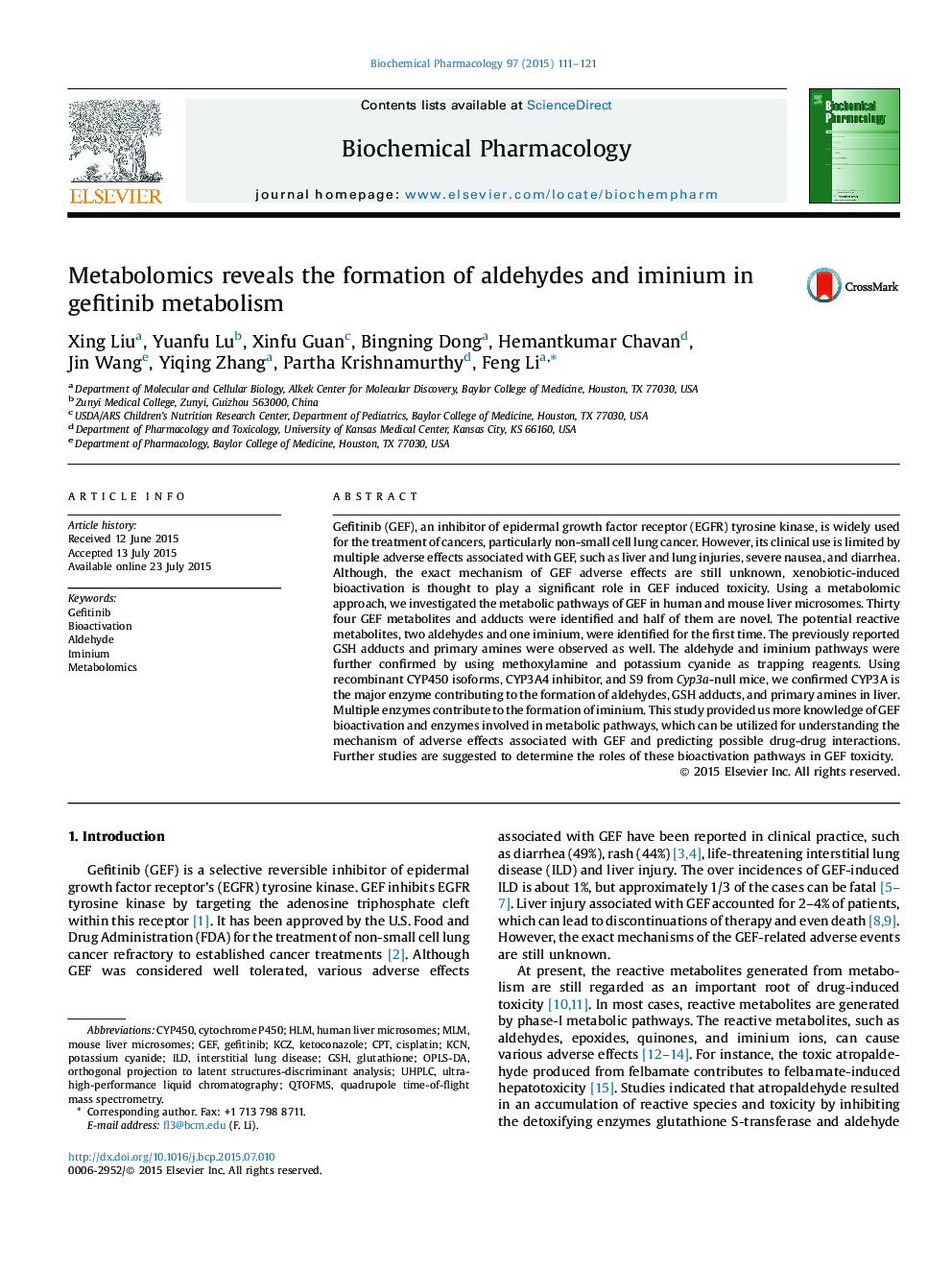| Article ID | Journal | Published Year | Pages | File Type |
|---|---|---|---|---|
| 2511907 | Biochemical Pharmacology | 2015 | 11 Pages |
Gefitinib (GEF), an inhibitor of epidermal growth factor receptor (EGFR) tyrosine kinase, is widely used for the treatment of cancers, particularly non-small cell lung cancer. However, its clinical use is limited by multiple adverse effects associated with GEF, such as liver and lung injuries, severe nausea, and diarrhea. Although, the exact mechanism of GEF adverse effects are still unknown, xenobiotic-induced bioactivation is thought to play a significant role in GEF induced toxicity. Using a metabolomic approach, we investigated the metabolic pathways of GEF in human and mouse liver microsomes. Thirty four GEF metabolites and adducts were identified and half of them are novel. The potential reactive metabolites, two aldehydes and one iminium, were identified for the first time. The previously reported GSH adducts and primary amines were observed as well. The aldehyde and iminium pathways were further confirmed by using methoxylamine and potassium cyanide as trapping reagents. Using recombinant CYP450 isoforms, CYP3A4 inhibitor, and S9 from Cyp3a-null mice, we confirmed CYP3A is the major enzyme contributing to the formation of aldehydes, GSH adducts, and primary amines in liver. Multiple enzymes contribute to the formation of iminium. This study provided us more knowledge of GEF bioactivation and enzymes involved in metabolic pathways, which can be utilized for understanding the mechanism of adverse effects associated with GEF and predicting possible drug-drug interactions. Further studies are suggested to determine the roles of these bioactivation pathways in GEF toxicity.
Graphical abstractFigure optionsDownload full-size imageDownload as PowerPoint slide
